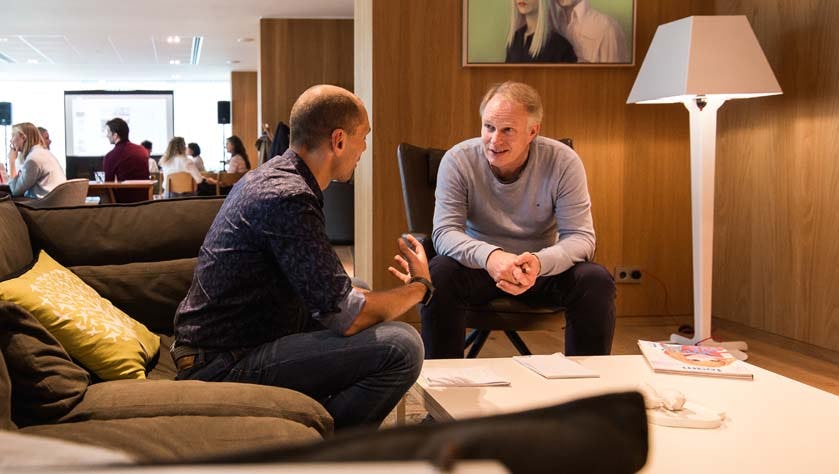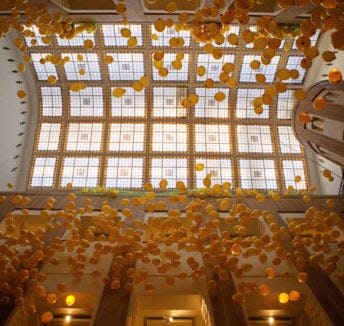
Watercooler moments can be a great way to bond with colleagues, but asking someone who’s into classical music and climbing roses what they think of the latest Beyoncé video or Supreme drop is unlikely to garner the close sense of camaraderie that can be so helpful for working together. But all is not lost. With five generations in the workforce, the good news is that today’s offices are more diverse than ever before – and with that comes great benefits, as well as the occasional challenge.
Workfloor culture clash
Whereas Generation Protest (born 1940-1955) are heading towards the end of their careers and Generation X (1955-1970) are likely to be at the height of theirs, Generation Pragmatic (1970-1985) and Generation Y (1985-2000) will be ready to make the next move into management positions and keen to assert greater control over their working lives. Generation Z (2000-2015), meanwhile, are just starting out and will have motivations of their own – development-focussed and enterprising by nature, their penchant for freedom and informality can be a challenge for older superiors who like things done a certain way.
If it goes unrecognised, culture clash can become a genuine problem – and not just in matters of musical taste. Different generations like to work differently, too: whereas older members of staff might prefer a traditional hierarchical culture, younger members tend to take a more task-based approach. While Protesters prefer to focus on process, for Xers it’s all about the relationships that form by working together. The Pragmatics and the Ys are more interested in the content, or end result, so it’s not hard to see how such varied approaches have the potential to result in frayed nerves and lost tempers.
What’s needed, then, is for each generation to give the others a little leeway. As the advertising industry never tires of telling us, youth is best – but there’s plenty that can be learned from someone older and wiser (and it’s worth noting that the US employs the largest number of over 65s anywhere in the world, with strict laws to protect them too). The World Health Organization notes that “Exposure to positive examples of older workers can improve implicit beliefs about older adults” and recommends promoting inclusivity: “Strategies to combat ageism can increase opportunities for intergenerational teams, and introducing campaigns to challenge the myths and inaccurate stereotypes that hinder older people’s ability to participate.” Likewise, dismissing an idea simply because it comes from someone younger, and the older colleague has “seen it all before”, is also dismissing the chance to try something new.
Ageism affects all ages
Ageism in the workplace cuts both ways, it seems. An older person might be thought of as past it and a younger worker might be overlooked for a role due to perceived inexperience. But that 58-year-old will have time on their side, and that 28-year-old might also bring fresh insight and a new way of doing things that makes life easier for everyone. At Spaces, age is nothing more than a number – instead, collaboration is the name of the game. As a shared environment, it’s about the sharing of ideas that makes each location an ideal destination for realising your goals – which is where the Business Club comes in. Whether you’re with your team or working in proximity to a fellow member you don’t know (yet), the opportunities for getting together are far greater than they would be in a conventional office where closed doors and siloed cubicles discourage participation.
According to the 2019 Global Workplace Survey published by IWG, a whopping 88% of one cohort surveyed supported flexible working because it meant a business could employ a more diverse workforce. How so? When things are more flexible, it opens the doors to more workers from different life stages. From the new parent who needs to drop their child off at day-care and come in a little later, to the millennial who prefers to work from home and drop in for meetings, to the semi-retired professional who’s able to adapt their hours to help a colleague with family commitments, managing a multigenerational workforce is all about adaptability. And as any big family gathering can tell you, generational differences in the workplace are better off being celebrated not suffered from.
Ageism might be a rising concern in society but it doesn’t have to be in the workplace. Our offices are designed with a multigenerational workforce in mind: every age has something to offer, and coworking can help make that happen. From community lunches to members’ breakfasts, networking is actively encouraged – after all, when you’re part of a club of likeminded individuals with a shared mindset for business, creativity and entrepreneurship, it makes sense to meet as many people – and share as many ideas – as possible. And it’s worth remembering that it was no less a visionary than the artist Pablo Picasso who said: “Youth has no age.” Even so, don’t expect a response from everyone when you mention Beyoncé’s Lemonade album.
Don’t see the age difference between you and your fellow coworkers as a problem – see it as a solution. Talking to our members just might help you achieve your next big breakthrough
Share this article
 Read now How Spaces picks its spaces
Read now How Spaces picks its spaces
 Read now Let's change the industry: Women In Dance
Read now Let's change the industry: Women In Dance